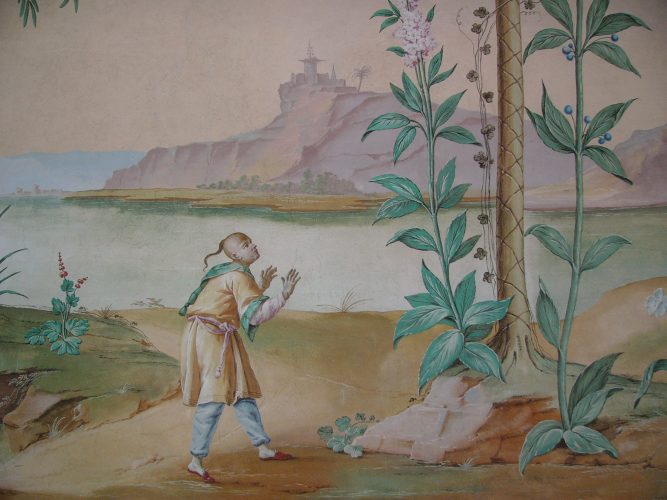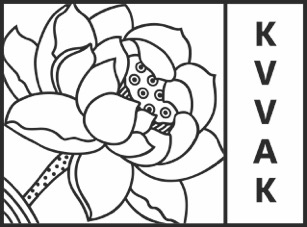
Eighteenth-Century Chinese Infatuation: Chinoiserie Interiors in Bohemia
KVVAK members are cordially invited to attend the lecture about Chinoiserie interiors in Bohemia by Lucie Olivová from Prague on 23 February (15.00-17.00 hrs) at Museum Volkenkunde.
The lecture itself is free to attend but you will need a valid ticket or museum card to enter Museum Volkenkunde
In the 17th and 18th centuries, luxury goods imported from China infatuated Europe, and in the field of applied arts gave rise to chinoiserie – imitations and reiterations of the original models.
This lecture will investigate the remnants of Chinese fashion in Bohemia, at that time a part of the Habsburg domain. Located inland, the fashion arrived there later than to sea bound centres, and as a research subject, the topic still remains somewhat neglected. Lucie shall first present a survey of historic “Chinese” cabinets and parlours, and describe their wall-decorations. In most cases, they are represented by murals by local artists; interiors bedecked with authentic Chinese wall-papers are nonetheless also preserved. After pointing out their typology, she shall elaborate on the case of rococo interiors decorated with woodblock prints made in Suzhou in the early 18th century. These artefacts are now rare, and their aesthetic quality is highly regarded. Evidence of this kind of decoration is proven in two Czech residences: Žleby (Schleb) and Veltrusy (Insel); in the latter the prints are still in place, featuring as components of the rococo interior. Designers of such interiors dealt with various challenges resulting from the quality of Chinese paper, and the relatively small format of the prints; this fact will be discussed, too. In conclusion, we shall note that Chinese fashion was predominantly followed by high ranking nobility who had social links to Viennese court.

Lucie Olivová, PhD (Masaryk University, Brno, Czechia) graduated in Sinology at Charles University, Prague, and then studied Chinese Literature and History of Chinese Art at University of California, Berkeley. Her Czech monographs include Tobacco in Chinese Society (2005) or, Traditional Chinese Architecture (2008). In English, she published numerous articles, e.g. Ignaz Sichelbarth, a Jesuit painter in China (Bohemia Jesuitica, 2010); and contributed to the Routledge Encyclopedia of Contemporary Chinese Culture (2005), Dumbarton Oaks Anthology of Chinese Garden Literature (2020) or, Beauty and Power: Clothing in Chinese Paintings and Historical Photographs (2022). She is member of the Folk-Print Research Group at Feng Jicai Institute, Tianjin.
